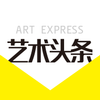分享到微信,
请点击右上角。
再选择[发送朋友]
或[分享到朋友圈]

戏服指专供戏剧表演使用的服装,区别于日常穿着的服装。戏服毕竟是戏服,只能掩饰一会儿的本色。有一定程式性的服饰、手法,及写实写意的布景是必要的。在台上的戏曲,是一幅幅美术创作,将布景、灯光、人物服饰配合后,便成为一幅幅构图和谐、色彩协调的图画。戏曲服装在舞台艺术方面是占一重要位置的。而戏曲服装的作用很多。收藏戏服最难的是防霉防蛀,一般剧团演出结束后要在太阳底下曝晒,封箱前用白酒喷洒,再加樟脑丸装箱。
中国戏曲种类繁多,大的小的,地方的,中央的,活跃于乡里的,通行于全国的,细细数去不下百种。这些戏曲风格各异,唱腔百调,不过有一样相同,就是唱戏的都有戏服,哪怕是个草台班子,再破再烂,行头一定要有一两件的。至于随着名气的增大,行头(戏服)自然是越来越多的。
小小的一个舞台,天南地北、山河湖海尽收其中,才子佳人帝王将相各呈其能,恩怨情仇在咫尺之地表现个淋漓尽致。说起来,几个人套上了件戏服,就造就了如此的神通。
清代的戏衣一般都用明代传统形式,故宫保存的戏衣中,很多做工讲究,纹样精美,如以明代的乌纱帽作为官帽、补报作为官衣等,并掺入了一部分时式服装,如箭衣、马褂、坎肩、及短袄等。据不完全统计,清代戏装的款式,大约有几十种甚至上百种之多,各地区、各剧种、各时期及各戏班还有差异。但总的看来,以蟒、帔、靠、褶、官衣等几种最为常用。
蟒是戏服中最为尊贵的一种服饰。样式为圆领、大襟,两侧有插摆,袖口缀有水袖。蟒的纹样依人物身份及性格特征的不同而有所变化。
此件藏品为五爪金龙戏服,其工艺属纯手工打造,采用云龙纹的形式将既体现。服饰分布协调,布局清晰。工艺实属难得。经一百多年保存,服饰依旧保存完好,以纱面料手工缝制,颜色鲜艳,纹样富丽典雅、皆有出处,织造精美绝伦。这份绝代风华的讲究和精致,堪称是独特的舞台工艺美术品。手工缝制,颜色鲜艳,纹样富丽典雅、皆有出处,织造精美绝伦。这份绝代风华的讲究和精致,堪称是独特的舞台工艺美术品。
“一悲一喜一抖袖,一颦一笑一回眸”,戏曲演员在舞台上的惊艳,离不开戏服的衬托,写满“中国故事”的戏服也深受票友以及戏服收藏者的追捧,它不仅是重要的物质文化遗产,也是精神层面的非物质文化遗产,国粹盛景从中可窥一二!
Costumes refer to costumes specially used for drama performances, which are different from daily clothes. After all, costumes are costumes, which can only hide their true colors for a while. It is necessary to have certain stylized costumes, techniques and realistic and freehand scenery. Opera on stage is an art creation. After matching the setting, lighting and character costumes, it becomes a picture with harmonious composition and coordinated color. Opera costumes occupy an important position in stage art. Opera costumes have many functions. The most difficult thing to collect costumes is to prevent mildew and moth. Generally, the troupe should be exposed to the sun after the performance, sprayed with Baijiu before sealing, and packed with camphor pills.
There are many kinds of Chinese operas, large, small, local, central, active in the countryside and popular all over the country. These operas have different styles and singing tunes, but one thing is the same, that is, those who sing operas have costumes. Even if it is a grass-roots team, there must be one or two pieces of costumes. As for the increasing popularity, there are naturally more and more costumes (costumes).
On a small stage, there are all kinds of places, mountains, rivers, lakes and seas. Talents, beauties, emperors, generals and officials show their abilities respectively, and gratitude, resentment and hatred are expressed incisively and vividly in a place close to them. Speaking of it, several people put on a costume and created such a magical power.
The costumes of the Qing Dynasty are generally in the traditional form of the Ming Dynasty. Many of the costumes preserved in the Forbidden City are exquisite in workmanship and patterns. For example, the black gauze hat of the Ming Dynasty is used as the official hat and the supplementary newspaper is used as the official dress, and some seasonal costumes are mixed, such as arrow clothes, mandarin jacket, waistcoat, and short jacket. According to incomplete statistics, there are about dozens or even hundreds of styles of costumes in the Qing Dynasty. There are still differences among regions, operas, periods and troupes. But generally speaking, python, cuddle, lean, pleat and official clothes are the most commonly used.
Python is one of the most noble costumes. The style is round neck and large placket, with inserted hem on both sides, and water sleeves on the cuffs. The patterns of Python vary according to the identity and personality characteristics of the characters.
This collection is a five clawed Golden Dragon costume, which is made by hand. It is embodied in the form of cloud dragon pattern. The clothing distribution is coordinated and the layout is clear. The craft is rare. After more than 100 years of preservation, the clothes are still well preserved. They are hand sewn with yarn fabrics, with bright colors, rich and elegant patterns, all of which have their origins, and the weaving is exquisite. The exquisite and exquisite of this unique style can be called a unique stage arts and crafts. Hand sewn, with bright colors, rich and elegant patterns, all of which have their origins, and the weaving is exquisite. The exquisite and exquisite of this unique style can be called a unique stage arts and crafts.
It is not only the cultural heritage of Chinese opera, but also the cultural heritage of Chinese opera. It is also an important part of Chinese opera. It can be seen from the scenery of Chinese opera. It is also an important part of Chinese opera!immeasurable.

分享到微信,
请点击右上角。
再选择[发送朋友]
或[分享到朋友圈]

